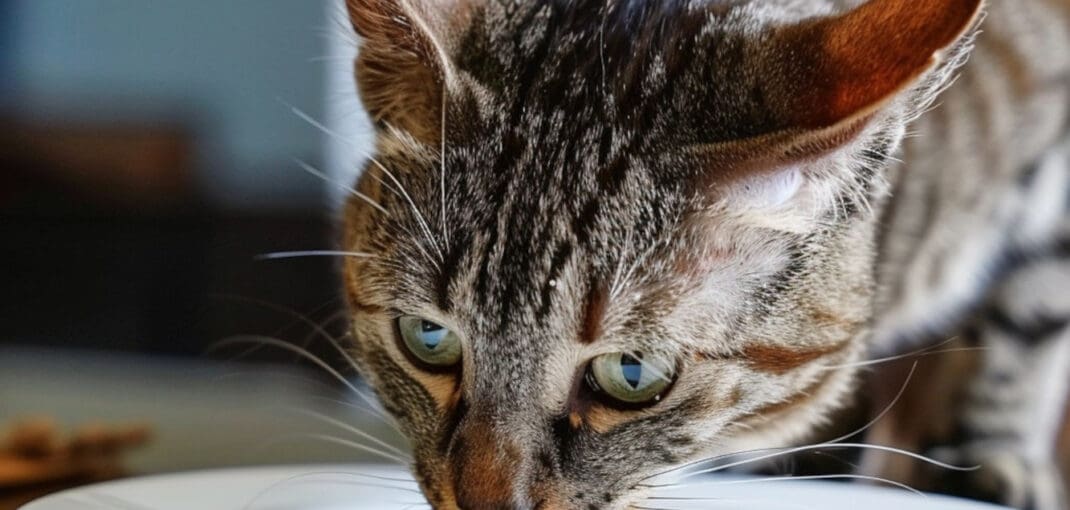Changing your cat’s food is a process that requires a careful approach and proper planning to avoid health problems and stress for your pet. Cats are known to be fussy eaters and can react negatively to dietary changes. In this guide, we will show you step-by-step how to make a food change safely and effectively, taking into account various factors such as your cat’s age, health and taste preferences. With our advice, your pet will switch to a new diet with minimal stress and maximum health benefits!
Why change your cat’s food?
Changing your cat’s food can be beneficial for a number of reasons.
- Firstly, your cat’s nutritional needs may change over time depending on their age, health or activity level. Young cats need a food rich in protein and fats to support their development, while older cats may require a lower calorie diet with additives to support joint and kidney health.
- Secondly, variety in the diet can help prevent allergies and food intolerances that can develop as a result of eating one and the same food for long periods of time.
- Thirdly, introducing a new food can help maintain a healthy digestive system – a way of providing a variety of sources of nutrients and probiotics.
How do I prepare my cat for a food change?
Changing your cat’s food requires patience and care. First, consult your vet for recommendations on a new diet suitable for your cat’s age, weight and condition (e.g. grain-free food for a cat that is overweight or allergic to grain proteins). Then stock up on one packet of the new food to test whether your cat will accept it. It is important that the new healthy cat food is introduced gradually, e.g. by mixing it with the current food in small amounts. At first, you can add 10-20% of the new food to a portion of the old food, gradually increasing the amount over the following days and weeks. Observe your cat’s reactions, both in terms of appetite, behaviour and health.
Stages of introducing a new food
The process of changing your cat’s food should be gradual – this will avoid digestive problems and minimise stress for your cat. In the first week, add a small amount of the new food to the existing diet – usually around 10-20% of the new food and 80-90% of the old food. Each subsequent week, increase the proportion of new food by around 10-20%, reducing the amount of old food accordingly. It is important to watch your cat’s reaction to the new food carefully. If you notice any digestive problems such as vomiting, diarrhoea or lack of appetite, slow down the introduction of the new food or consult your vet. A full change of food should take around 4-6 weeks, depending on your cat’s individual response.
The most common problems when changing a cat’s food
Several common problems can be encountered when changing your cat’s food.
- One of the most common is lack of appetite or refusal to eat the new food. Cats are known to be fussy eaters, so it is important to gradually introduce the new food and mix it with the existing diet.
- Other problems may include digestive complaints such as vomiting, diarrhoea or constipation.
If these symptoms occur, it is worth slowing down the introduction of a new diet for your cat and consulting your vet. Some cats may develop allergies or intolerances to new ingredients, which may require a change in diet or a different food choice.
How do you monitor your cat’s health after a food change?
Monitoring your cat’s health after a food change is crucial to make sure the new diet is working for him. Observe your cat’s behaviour, energy levels, appetite and general wellbeing. Pay attention to his coat, which should be shiny and healthy – a good indicator of adequate nutrition. Check your cat’s weight regularly to ensure it is not gaining or losing weight uncontrollably. It is also worth monitoring the regularity and consistency of bowel movements, which can indicate how well your cat is absorbing the new food. Diarrhoea in a cat after a food change? Digestive problems in your cat? Regular visits to your vet will keep your cat’s health in check and respond quickly to any worrying symptoms.
Changing your cat’s food can be a challenge, but with the right approach and patience it can be done effectively and safely. Remember to introduce the new food gradually, observing your cat’s reactions and adjusting the process as necessary. Consulting your vet can also help you choose the right diet and avoid health problems.






